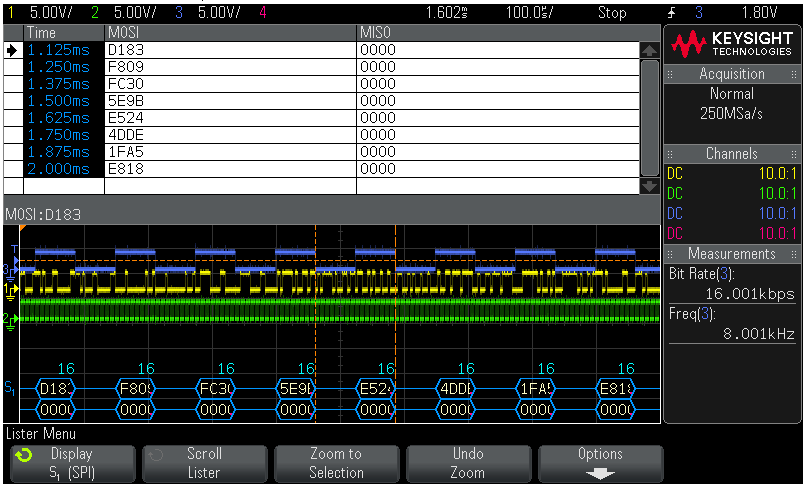Cirrus Logic CS4335 DAC problems finally identified and fixed.
I had some assistance in fixing this problem. My always helpful friend Brian from Canada as well as some help from Steve @ the Audacity forums contributed to solving the problem. They filled in some blanks for me, and encouraged me to LOOK at the data to see the problem.
This is the “Quit thinking and look” solution found in this book called “Debugging Rules”. Absolutely love this book!! Amazon link.
- I used Signal Tap II on the Altera FPGA as an internal logic analyzer to see both address values and ROM data values, so that I could correlate them with the serial data going outbound. This was an invaluable tool. There are also tutorials on youtube. Here’s an example of the data I was able to get: (CLICK FOR FULL SIZE)
- I was also able to use my new mixed signal scope to capture the waveforms. The data is 8khz sample rate and 16-bit audio. Check out how nicely spaced these samples are — exactly 125ms apart!
- The data coming out of Audacity’s Export Audio (Header: RAW, Encoding: Signed 16-bit PCM) was the opposite endianness that the DAC was expecting. I switched the bytes from 0xABCD to 0xCDAB and that fixed it.
- My overall electronic design in Verilog for this was just ugly. And initially did not work — I wasn’t putting the right data on the serial pin at the right time. The right Verilog was ridiculously simple once I distilled it down properly.
- I’ll post the Verilog with data files once I clean them up a bit. Feel free to email me (contact info above at menu) to nudge me if I haven’t done this yet.
- I used SRECORD to convert the output of Audacity into a .MIF to load into a virtual ROM on the altera. I could have byte-swapped during the conversion, but currently do it on the FPGA. Either way is easy enough.
- The initial 700hz tone that I have been fighting with for awhile finally came out alright tonight. It really was music to my ears.
- I added a little more interesting sound below:

